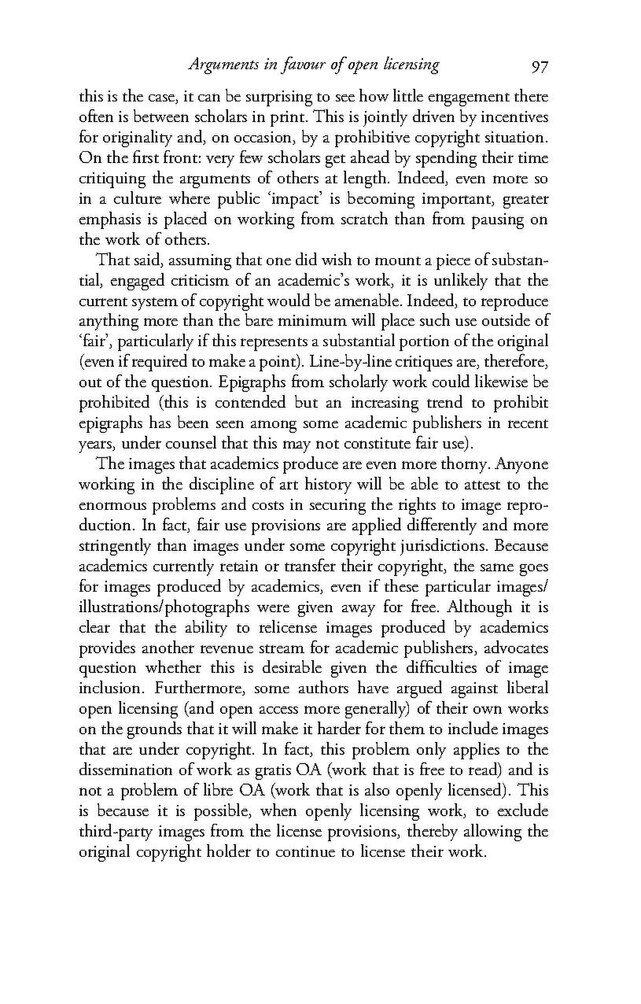this is the case, it can be surprising to see how little engagement there often is between scholars in print. This is jointly driven by incentives for originality and, on occasion, by a prohibitive copyright situation. On the first front: very few scholars get ahead by spending their time critiquing the arguments of others at length. Indeed, even more so in a culture where public ‘impact’ is becoming important, greater emphasis is placed on working from scratch than from pausing on the work of others.
That said, assuming that one did wish to mount a piece of substantial, engaged criticism of an academic’s work, it is unlikely that the current system of copyright would be amenable. Indeed, to reproduce anything more than the bare minimum will place such use outside of ‘fair’, particularly if this represents a substantial portion of the original (even if required to make a point). Line-by-line critiques are, therefore, out of the question. Epigraphs from scholarly work could likewise be prohibited (this is contended but an increasing trend to prohibit epigraphs has been seen among some academic publishers in recent years, under counsel that this may not constitute fair use).
The images that academics produce are even more thorny. Anyone working in the discipline of art history will be able to attest to the enormous problems and costs in securing the rights to image reproduction. In fact, fair use provisions are applied differently and more stringently than images under some copyright jurisdictions. Because academics currently retain or transfer their copyright, the same goes for images produced by academics, even if these particular images/ illustrations/photographs were given away for free. Although it is clear that the ability to relicense images produced by academics provides another revenue stream for academic publishers, advocates question whether this is desirable given the difficulties of image inclusion. Furthermore, some authors have argued against liberal open licensing (and open access more generally) of their own works on the grounds that it will make it harder for them to include images that are under copyright. In fact, this problem only applies to the dissemination of work as gratis OA (work that is free to read) and is not a problem of libre OA (work that is also openly licensed). This is because it is possible, when openly licensing work, to exclude third-party images from the license provisions, thereby allowing the original copyright holder to continue to license their work.
